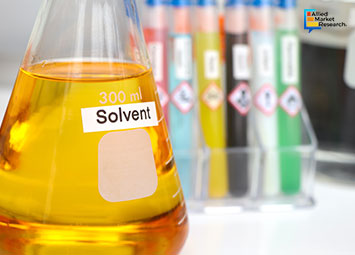Exploring the Evolving Landscape of Solvents in Industrial Use

16 Jul
2025
Highlights:
- Introduction
- Shift to eco-friendly, low-VOC solvents
- New launches by leading companies
Solvents are one of the most essential components in countless industrial applications. From coatings and adhesives to pharmaceuticals and agrochemicals, solvents play an important role in ensuring processes run smoothly and effectively. Despite their widespread use, the conversation around solvents has grown deeper, especially in light of rising safety concerns, environmental awareness, and demand for better-performing alternatives. This post takes a closer look at how solvents are evolving in response to changing needs and regulations across industries.
How Solvent Composition is Being RethoughtSolvents are no longer just about dissolving substances. Today, their chemical makeup is being closely examined by manufacturers and end-users alike. Many companies are moving away from traditional petroleum-based solvents and considering greener substitutes like bio-based or water-based solvents. These alternatives are being looked at for their lower toxicity, biodegradability, and reduced emissions. In several production processes, there is a noticeable shift in how solvents are chosen, not just for performance, but also for how they support broader safety and sustainability requirements.
Volatile organic compounds (VOCs) are a key concern here. Traditional solvents with high VOC content often cause air quality problems and pose health risks to workers. Regulatory bodies in the U.S., EU, and parts of Asia have already tightened control over VOC emissions. This has encouraged the use of low-VOC or VOC-free solvents in sectors like automotive coatings and printing.
Applications Are Driving Technical AdjustmentsDifferent industries demand different solvent properties. For example, the electronics industry requires solvents that are both highly pure and non-corrosive. In contrast, the pharmaceutical sector prioritizes solvents that leave minimal residue and meet strict safety standards for human consumption. The coatings industry, which includes paints and varnishes, often looks for fast-evaporating solvents to improve drying times without sacrificing finish quality. In response, chemical manufacturers are reengineering solvents to cater to specific technical needs rather than offering one-size-fits-all products.
Even within the same industry, the use of solvents can vary drastically. In the automotive sector, solvent-based paints are used in factory settings where drying ovens and proper ventilation are in place. But when it comes to repair shops or on-site applications, water-based alternatives are often preferred due to lower health risks. This shows how closely solvent use is tied to the working environment and equipment setup, which in turn shapes the kind of formulations being developed today. According to Allied Market Research, the solvents industry is anticipated to showcase a significant CAGR from 2023 to 2032.
Regulations, Costs, and Supplier CapabilitiesGovernments are enforcing stricter controls on how solvents are produced, stored, and disposed of. These rules affect not only large chemical companies but also small businesses that use solvents regularly. Changes in transportation laws, labelling rules, and waste handling methods are increasing the compliance burden. As a result, solvent suppliers are expected to provide detailed safety data, technical guidance, and customer support, not just the product.
At the same time, cost pressures are growing. Global feedstock fluctuations and energy prices have made solvent production more expensive. Some solvent types, especially those based on petrochemicals, have seen pricing volatility. This affects purchasing decisions in industries that consume large volumes, such as paints, adhesives, and chemical manufacturing. Companies are also evaluating total cost of ownership, including waste treatment and worker safety training, rather than just the purchase price of solvents.
Solvent suppliers are now investing in application-specific R&D, better logistics, and after-sales support. Customers expect more than just a chemical; they want reliability, consistency, and assurance that the product will meet both technical and legal expectations. That’s why supplier capabilities are playing a bigger role in long-term buying decisions.
Key launches and expansions in 2025In 2025, several developments have highlighted the fast-changing nature of this industry. In May, BASF launched a new line of low-VOC solvents tailored for the automotive refinish sector in North America. These new solvents are said to help meet regional air quality regulations while maintaining performance standards for finish and durability. Similarly, Solvay introduced a next-generation solvent blend for pharmaceutical use in Asia, claiming improved safety profiles and faster process times.
In June, Evonik Industries announced an expansion of its production line for green solvents derived from sugar-based feedstocks. These solvents are targeted at customers in the coatings and agricultural sectors who want to reduce their environmental footprint without compromising quality. This move aimed to bring sustainable chemical solutions to a wider range of industries.
Solvent producers are now actively adapting to both regulatory and customer demands. Instead of relying on legacy formulations, they are trying to build portfolios that serve industry-specific requirements with a sharper focus on health, safety, and environmental outcomes.
Closing ThoughtsSolvents often seem like a behind-the-scenes part of manufacturing, but their role is anything but small. The way solvents are designed, used, and managed is changing across industries. From increasing environmental expectations to technical challenges and cost pressures, businesses are rethinking their solvent strategies to meet evolving needs. With regulations tightening and buyers becoming more selective, the focus is shifting toward safer, more efficient, and purpose-driven solvent solutions.
Reach out to our team of experts to gain valuable insights into the latest advancements and emerging trends shaping the solvents industry.
✍ **𝑨𝒓𝒕𝒊𝒄𝒍𝒆 𝒘𝒓𝒊𝒕𝒆𝒓: Koyel Ghosh

Koyel Ghosh
Author’s Bio- Koyel Ghosh is a blogger with a strong passion and enjoys writing in miscellaneous domains, as she believes it lets her explore a wide variety of niches. She has an innate interest in creativity and enjoys experimenting with different writing styles. A writer who never stops imagining, she has been serving the corporate industry for the last five years.
Avenue: Entire Library membership of Allied Market Research Reports at your disposal
- Avenue is an innovative subscription-based online report database.
- Avail an online access to the entire library of syndicated reports on more than 2,000 niche industries and company profiles on more than 12,000 firms across 11 domains.
- A cost-effective model tailored for entrepreneurs, investors, and students & researchers at universities.
- Request customizations, suggest new reports, and avail analyst support as per your requirements.
- Get an access to the library of reports at any time from any device and anywhere.
Related Post
-
How are Submarine Cables Transforming Global Connectivity with Enhanced User Experience?
-
Endoscopy Procedures: Transformations in Techniques and Applications
-
AI-Powered Video Analytics: How the Product Actually Works for enterprises
-
Painting Robots: Transforming Precision Coating and Creative Applications
-
Innovations in Pharmacovigilance Systems Advancing Patient Safety
-
Understanding Edge Security: Keeping Data Safe Near the Source
-
Exploring the Use and Advancements of 3D Laser Scanners in Professional Applications
-
Reinforcing Industrial Controls with Smarter Tools and Training








